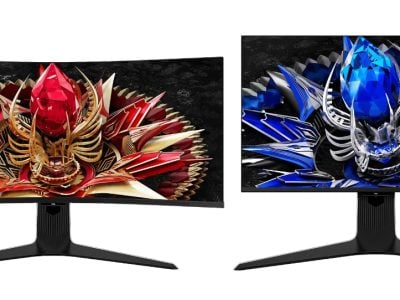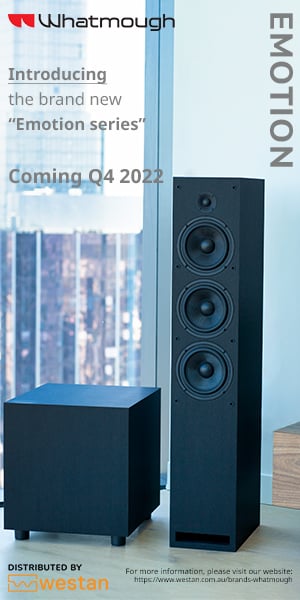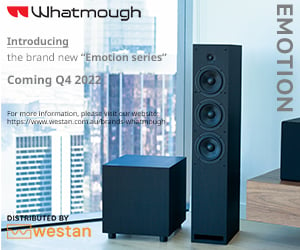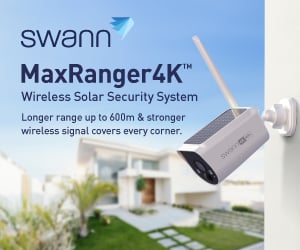By John Archer & David Richards: It’s on, a new TV war between Samsung and LG Electronics with Samsung set to reveal an all new NEO QLED, Mini LED TV that is based around the new MiniLED technology, so how do their new 65″ NEO MiniLED stack up.
TCL the #2 TV brand in the world was the first to sell this new display technology with their mini-LED TVs having been on sales for nearly two years now Samsung and LG Electronics are set to enter the market with the new Display technology.
Samsung is set to be the first in Australia of the two South Korean TV giants to release a Mini LED TV which SmartHouse reviewer John Archer has already got his hands on though we understand that they will be in short supply.
The 4K 65″QN65QN90A which is already in the UK market is the same TV as what will be released in Australia and Archer has described it as delivering game-changing levels of backlight control.
He claims the shift to Mini LED technology (which removes the bulky lens and ‘packaging’ elements associated with normal LED lights) has enabled Samsung to design a TV with a slimmer design than you got with last year’s equivalent model.
With the 65QN90A there are 792 separate dimming zones. This is not the thousands of dimming zones mentioned in some general Mini LED hype, and is apparently less than we can expect to find in Samsung’s upcoming 8K Mini LED TVs.
On the other hand, 792 ones is considerably more than the 480 zones that marked the most we found on any of Samsung’s 2020 sets. In fact, 2020’s 4K flagship only benefitted from 120 separate dimming zones.
The emergence of MiniLED has allowed Samsung to completely redesigned its backlighting algorithms to accommodate Mini LED’s capabilities, including reconfiguring the extra power management element (where power is continually redistributed from dark areas that don’t need it to bright areas that do.
There is also a new Quantum Matrix system that powers a new Black Detail Boost feature designed to retain more shadow detail in dark picture areas.
Then there is the Neo Quantum Processor, complete with so-called ‘multi-intelligence’. This processor can draw on the image outcomes of a massive 16 neural networks, and then intelligently select the optimal outcome from these 16 possibilities for each and every image scenario.
What has not gone away is Samsung’s ‘QLED’ Quantum Dot technology, this is now combined with their Mini LED to create a new Neo QLED nomenclature.
In testing this TV delivered 2,700 nits of brightness on a white HDR square occupying 10% of the screen, this is huge.
For gamers and new generation console owners they now have access to PC graphics cards and two new consoles capable of shipping out 4K HDR graphics at 120Hz frame rates,
One key weak point is that the QN65QN90A only has a single HDMI port capable of handling that level of data.
But don’t stress because the input lag, for instance, is now running at 9.2ms in the most basic Game mode. This rises to 14ms with the Game Motion Pro system switched on.
It’s also the first TV to support the 21:9 and 32:9 ultra-wide aspect ratio options now provided by a growing number of PC games.
Missing from this TV is Dolby support, there’s neither built-in Dolby Atmos decoding (though Atmos can be passed through to external audio devices over the TV’s e-ARC HDMI) nor Dolby Vision HDR claims Archer.
Dolby Atmos and Dolby Vision is fast becoming common on most TV’s and Dolby Atmos also appears on a significant and growing number of Xbox and PC games.
Instead, Samsung has chosen to support the baseline HDR10 format, the broadcast-friendly HLG format, and the Samsung-developed HDR10+ format.
The latter, like Dolby Vision, adds extra scene by scene picture data to help compatible TVs deliver more accurate and dynamic-looking pictures.
What this TV does have is a sophisticated, multi-channel speaker system that incorporates a 4.2.2 configuration capable of delivering sound from all of the TV’s edges, rather than just from the bottom edge as happens with most TVs.
This allows Samsung to provide an Object Tracking Sound (OTS+) system that’s able to place sound details with more precision.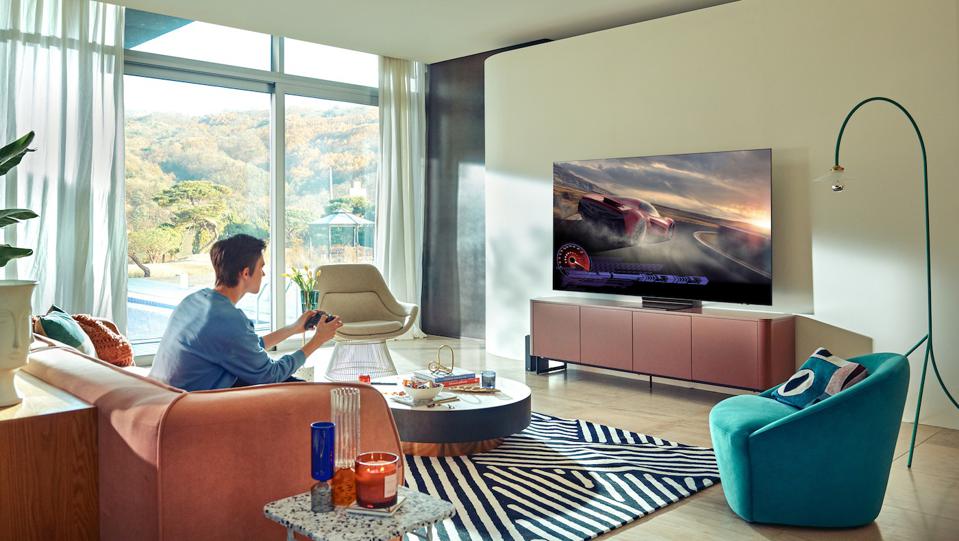
The QN65QN90A’s audio set up can also unlock Samsung’s Q-Symphony system, where a Samsung soundbar connected via the TV’s ARC HDMI port can combine with the speakers in the TV to deliver a larger, ‘higher’ wall of sound.
The first thing you will notice about Samsung’s new NEO MiniLED technology is that the black lack levels are sensational, way better than the old Pioneer Kuro engine than many reviewers in the past praised because of the deep blacks. This is vastly better.
There’s no sign of baseline black level ‘flicker’, and when this TV fades to black, its screen completely blends in with the pitch darkness of a blacked-out room.
Another really neat addition and I have been playing with mine for some weeks is that the remote has a solar panel on its rear eliminating the need for batteries.
This TV is capable of delivering levels of brightness OLED screens can only dream about.
In fact, the combination of this new brightness with the improved local light control produces an almost luminous quality and intensity to many HDR images that goes beyond anything experienced before on any TV with the exception of some insanely expensive 8K models.
As a result, daylight exteriors in aggressively mastered 4K HDR Blu-ray titles such as Mad Max: Fury Road, It and Pan enjoy a remarkably believable, realistic level of luminosity – especially as the 65QN90A can maintain its immense brightness with most of its picture pre-sets even when the whole screen is full of bright imagery.
Archer claims that there is a couple of issues with the backlighting, first, the left and right edges of the picture can – depending on what you’re watching – look slightly dimmer than the rest of the image for around a cm or so.
The other issue is some ‘dirty screen effect’.
The shot in Blade Runner 2049 at around 3:50, where K approaches Sapper’s home, reveals faint vertical shadowy bands within the shot’s whiteness – especially if you’re using the Movie picture pre-set. There’s also a slight horizontal banding effect in the sequence at the start of Chapter 2 of BR 2049 as the Spinner flies across the city towards HQ.
This can also be seen in the bland grey walls of some shots in K’s apartment, from 17.14 until the end of the scene. Especially, again, in Movie mode, or when using the TV’s Intelligent Adaptive picture mode.
Fortunately, these effects occur only rarely, or are typically faint enough to barely be noticeable.
Sound Quality
The 65QN90A sound system has been described as good to very good.
On the upside, in the default audio setting the sound is clean and detailed, and those details don’t sound harsh or sibilant even when they contain lots of treble. Voices are clear, convincing and nicely contextualised against the rest of the mix (rather than standing too proud of it).
Voices and effects also typically sound remarkably accurately positioned on the screen thanks to the OTS system, and there’s a decent amount of bass too. Not as much as we’ll likely hear from Samsung’s 8K TVs for 2021, which feature an array of extra woofers built onto their rears, but enough to stop action scenes from sounding thin or lop-sided. This bass tends to remain free of distortion and crackling, too.
Maximum volume levels are a little limited, though, and the sound can appear a bit reserved/lacking in direct, forward facing attack.
The Intelligent Mode’s Adaptive Sound+ setting alworks well for ‘big’ films with a noticeably expanded the soundstage, creating more of a wall of sound that exists beyond the edges of all four sides of the TV’s bodywork, and giving the sound a more dynamic and direct quality.
Archers Verdict
While Samsung’s move to Mini LED feels more on the QN65QN90A like a backlight evolution than a flat-out revolution, it’s a massively welcome evolution, nonetheless.
After all, it enables Samsung to enhance the already spectacular colour and contrast it’s become renowned for in recent years while also fixing almost all of the lost shadow detail and backlight compromise/inconsistency issues the brand has previously had to wrestle with on its regular Full Array LCD TVs.
Couple this with improved processing and (bar the shortage of 40GB HDMI ports) a comprehensive array of highly effective next-gen gaming features, and it’s hard to imagine how much more imposing a gauntlet Samsung could have thrown down to its 2021 TV rivals.












